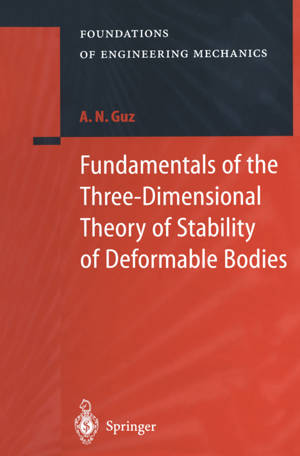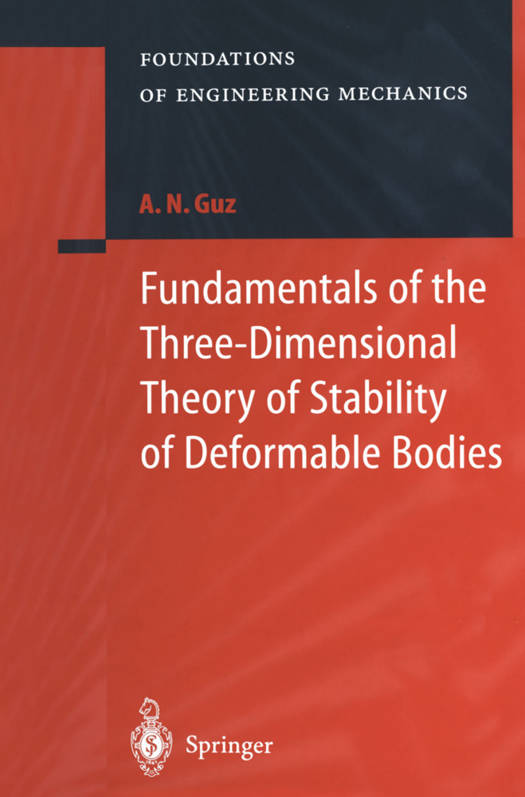
Door een staking bij bpost kan je online bestelling op dit moment iets langer onderweg zijn dan voorzien. Dringend iets nodig? Onze winkels ontvangen jou met open armen!
- Afhalen na 1 uur in een winkel met voorraad
- Gratis thuislevering in België vanaf € 30
- Ruim aanbod met 7 miljoen producten
Door een staking bij bpost kan je online bestelling op dit moment iets langer onderweg zijn dan voorzien. Dringend iets nodig? Onze winkels ontvangen jou met open armen!
- Afhalen na 1 uur in een winkel met voorraad
- Gratis thuislevering in België vanaf € 30
- Ruim aanbod met 7 miljoen producten
Zoeken
Fundamentals of the Three-Dimensional Theory of Stability of Deformable Bodies
A N Guz
€ 105,45
+ 210 punten
Omschrijving
At the present time stability theory of deformable systems has been developed into a manifold field within solid mechanics with methods, techniques and approaches of its own. We can hardly name a branch of industry or civil engineering where the results of the stability theory have not found their application. This extensive development together with engineering applications are reflected in a flurry of papers appearing in periodicals as well as in a plenty of monographs, textbooks and reference books. In so doing, overwhelming majority of researchers, con- cerned with the problems of practical interest, have dealt with the loss of stability in the thin-walled structural elements. Trying to simplify solution of the problems, they have used two- and one-dimensional theories based on various auxiliary hypotheses. This activity contributed a lot to the preferential development of the stability theory of thin-walled structures and organisation of this theory into a branch of solid mechanics with its own up-to-date methods and trends, but left three-dimensional linearised theory of deformable bodies stability (TL TDBS), methods of solving and solutions of the three-dimensional stability problems themselves almost without attention. It must be emphasised that by three- dimensional theories and problems in this book are meant those theories and problems which do not draw two-dimensional plate and shell and one-dimensional rod theories.
Specificaties
Betrokkenen
- Auteur(s):
- Uitgeverij:
Inhoud
- Aantal bladzijden:
- 557
- Taal:
- Engels
- Reeks:
Eigenschappen
- Productcode (EAN):
- 9783662219232
- Verschijningsdatum:
- 3/10/2013
- Uitvoering:
- Paperback
- Formaat:
- Trade paperback (VS)
- Afmetingen:
- 156 mm x 234 mm
- Gewicht:
- 793 g

Alleen bij Standaard Boekhandel
+ 210 punten op je klantenkaart van Standaard Boekhandel
Beoordelingen
We publiceren alleen reviews die voldoen aan de voorwaarden voor reviews. Bekijk onze voorwaarden voor reviews.











